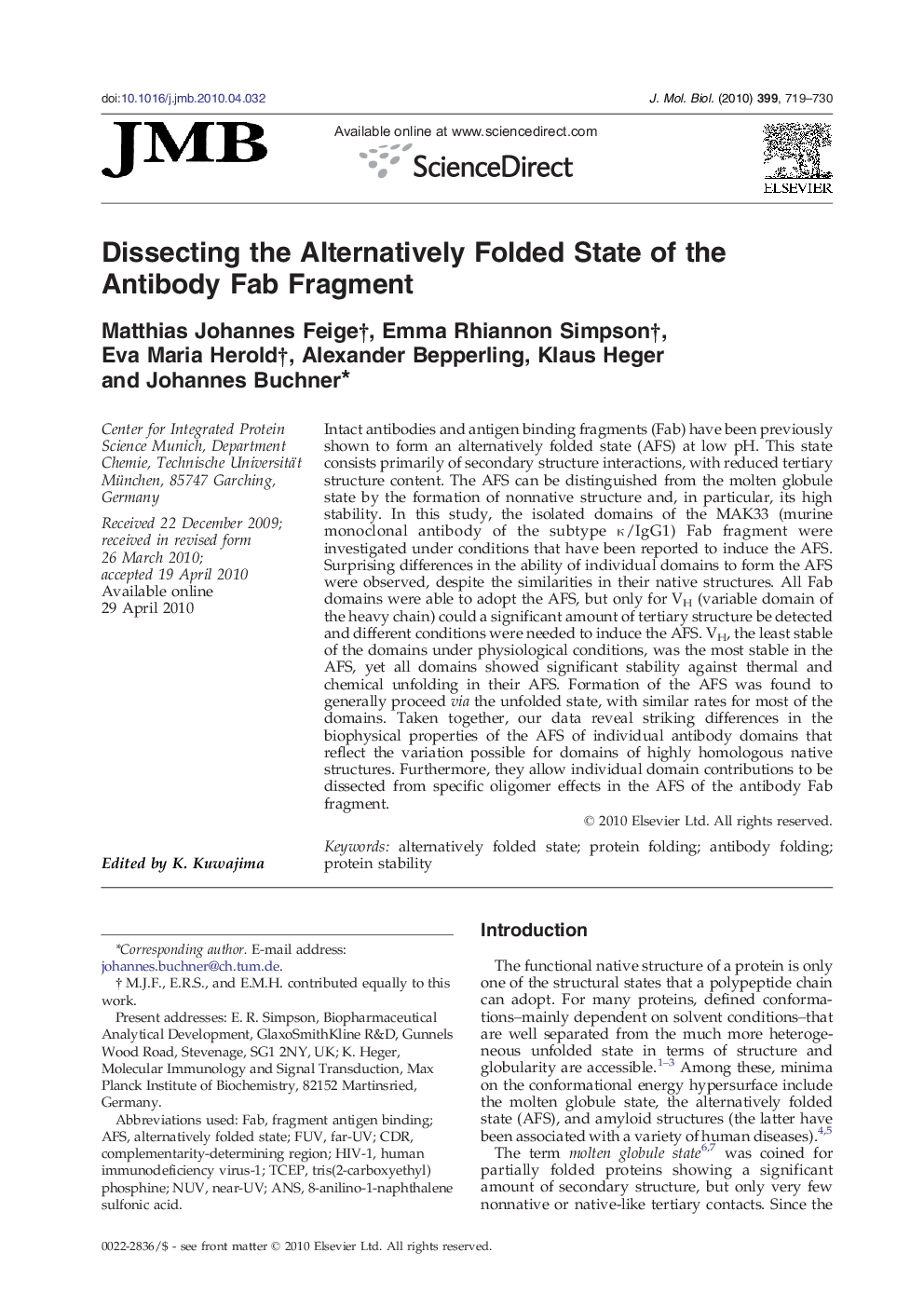| کد مقاله | کد نشریه | سال انتشار | مقاله انگلیسی | نسخه تمام متن |
|---|---|---|---|---|
| 2186139 | 1096036 | 2010 | 12 صفحه PDF | دانلود رایگان |

Intact antibodies and antigen binding fragments (Fab) have been previously shown to form an alternatively folded state (AFS) at low pH. This state consists primarily of secondary structure interactions, with reduced tertiary structure content. The AFS can be distinguished from the molten globule state by the formation of nonnative structure and, in particular, its high stability. In this study, the isolated domains of the MAK33 (murine monoclonal antibody of the subtype κ/IgG1) Fab fragment were investigated under conditions that have been reported to induce the AFS. Surprising differences in the ability of individual domains to form the AFS were observed, despite the similarities in their native structures. All Fab domains were able to adopt the AFS, but only for VH (variable domain of the heavy chain) could a significant amount of tertiary structure be detected and different conditions were needed to induce the AFS. VH, the least stable of the domains under physiological conditions, was the most stable in the AFS, yet all domains showed significant stability against thermal and chemical unfolding in their AFS. Formation of the AFS was found to generally proceed via the unfolded state, with similar rates for most of the domains. Taken together, our data reveal striking differences in the biophysical properties of the AFS of individual antibody domains that reflect the variation possible for domains of highly homologous native structures. Furthermore, they allow individual domain contributions to be dissected from specific oligomer effects in the AFS of the antibody Fab fragment.
Journal: Journal of Molecular Biology - Volume 399, Issue 5, 25 June 2010, Pages 719–730